Click to Pic!
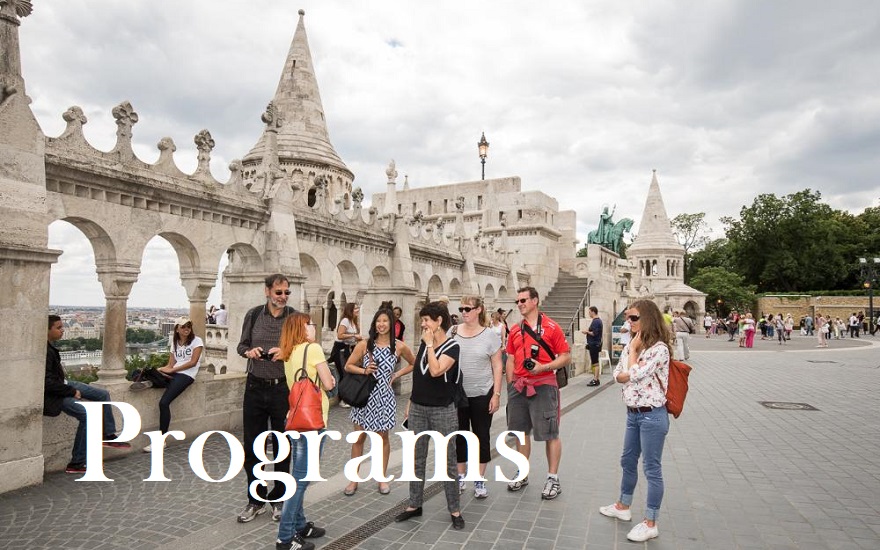
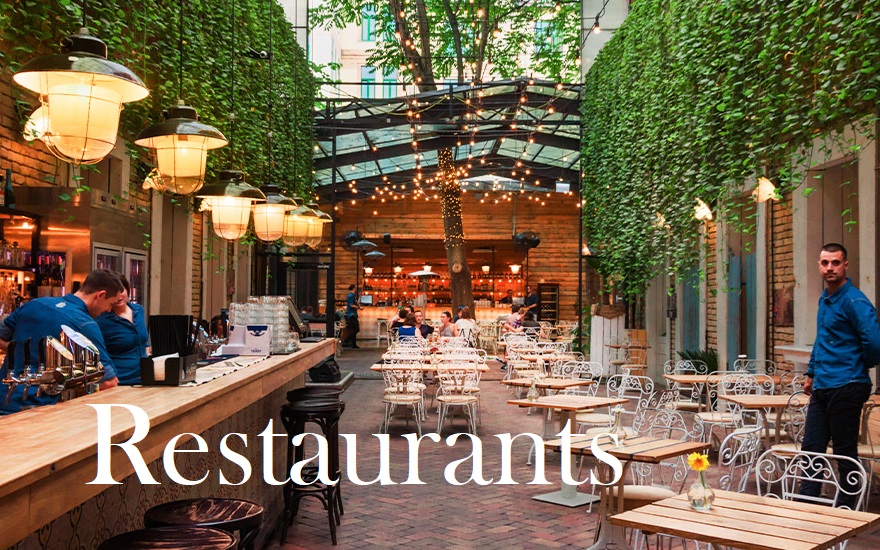
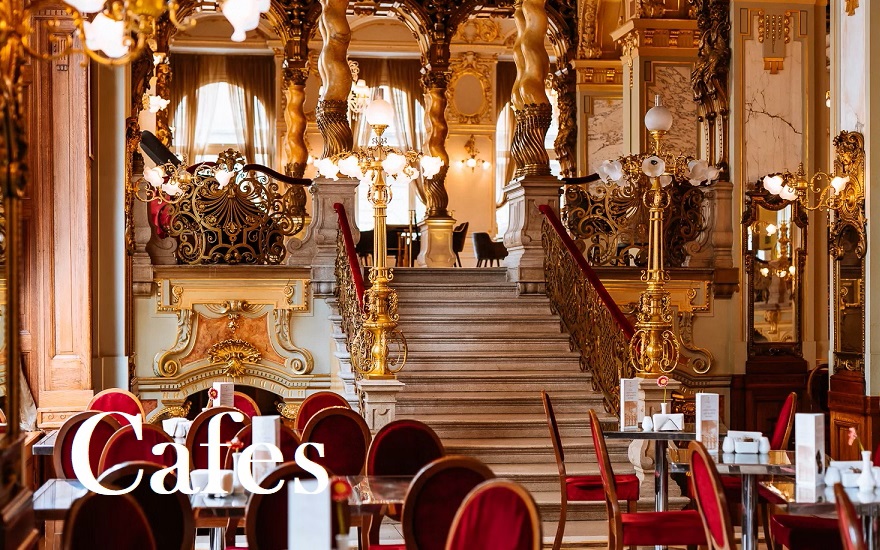
Recommended Venues
Gellért Baths
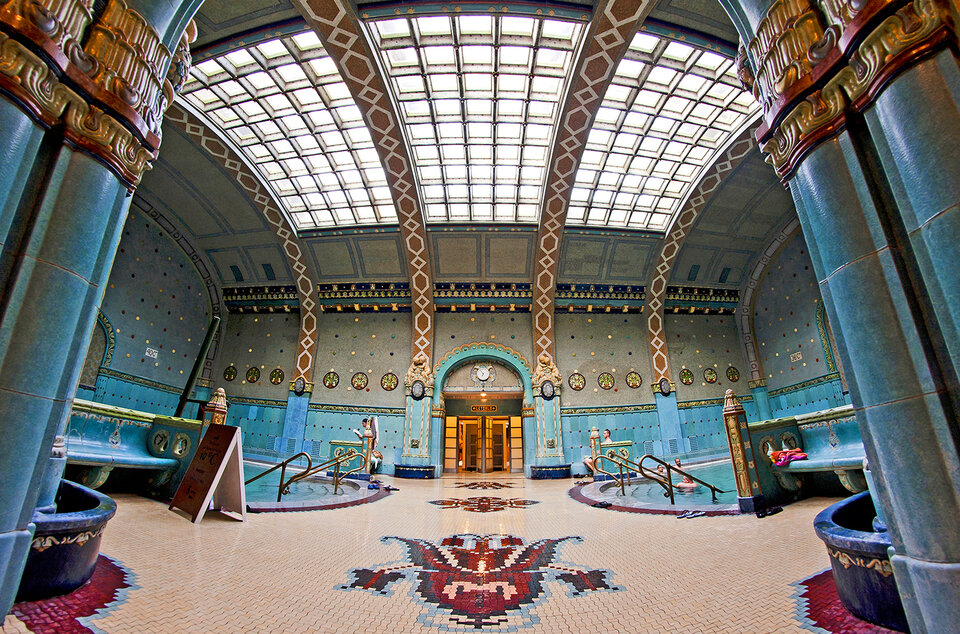
The best-known of Budapest’s many spas, the Gellért Baths are housed in a magnificent Art Nouveau building between Gellért Hill and Liberty Bridge. Designed before World War I, the spa and adjoining hotel of the same name were not unveiled until 1918, anticipating the so-called Silver Age when Budapest was part of the Grand Tour. It was here that the world’s first wave pool was opened, in 1927, still a major feature of the baths today. Surrounding it are elegant grounds and a terrace to relax and sunbathe. Though attached to the Gellért Hotel, the spa operates separately. Both are still a symbol of luxury and comfort, much of their shine restored during a comprehensive renovation in 2008. Within, thermal and swimming pools display the same gorgeous decorative aesthetic as envisaged more than a century ago. The complex also has a sauna and steam room, and offers medical and beauty treatments.
New York Palace Budapest

The New York Palace is one of the most striking buildings on Grand Boulevard, an architectural splendour from the heyday of the turn of the century. Today, it is home to the five-star Anantara Hotel, which offers modern luxury while preserving the grandiose milieu. And this luxury is not only available for hotel guests: anyone is welcome to visit the hotel's spa, the New York Café, and, from now on, the White Salon Restaurant. You can even be among the first ones to try the latter as it opened only a couple of days ago. We paid them a visit and here is what we thought.
We leave the business of Grand Boulevard behind as we step into the impressive Neo-Renaissance building of the New York Palace, which houses the five-star Anantara Hotel. Inside, we stride past the world's most beautiful café on our way to the recently opened White Salon Restaurant, and it feels like being transported back to the grandeur of the last century. The Palace is glamorous, famous and historic, no wonder it appeared in Hollywood films, such as Spy Game or Red Sparrow.
Heroes’ Square
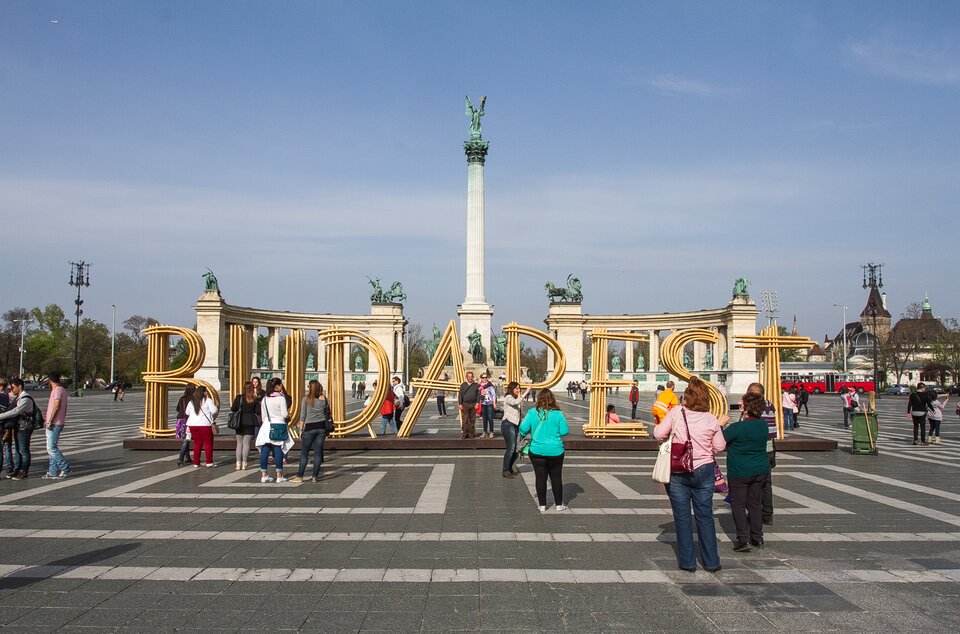
One of the city’s main landmarks and the gateway to the City Park or Városliget, Heroes’ Square (Hősöktere) bookends elegant Andrássy út. Construction began in 1896, when citywide developments marked the millennial celebrations of the foundation of the Hungarian state. Two colonnades display 14 emblematic figures from Hungarian history, and form a semi-circle around the centrepiece column, which itself is surrounded by the seven original Magyar chieftains and topped by the Archangel Gabriel. Flanking each side of the square are two major cultural institutions: the Museum of Fine Arts, completely revamped and reopened in 2018, and the Kunsthalle, home of temporary exhibitions of, mainly, contemporary art.
Museum of Ethnography
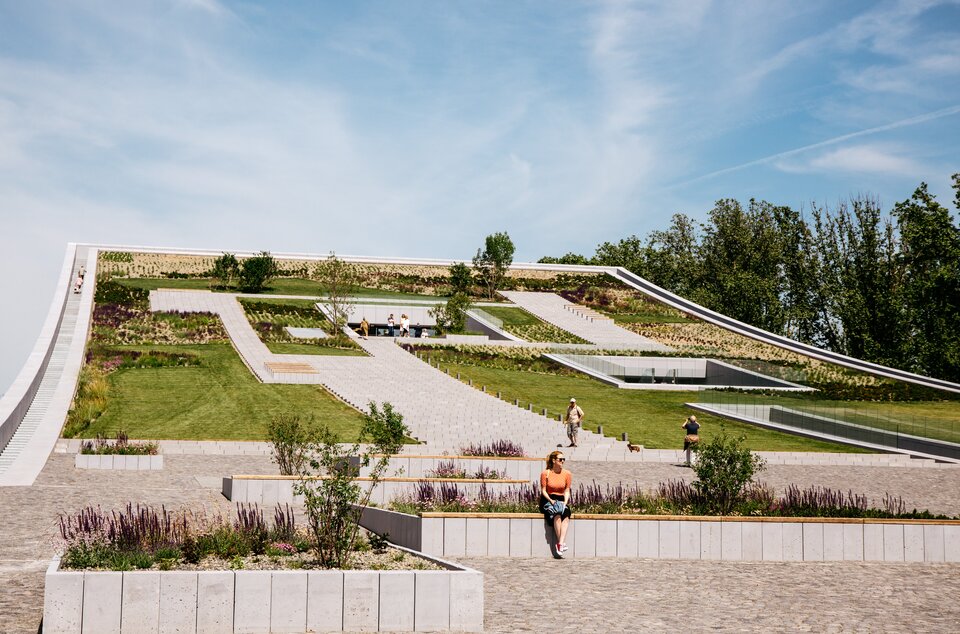
The 150-year-old Museum of Ethnography (Néprajzi Múzeum) is a national institution mainly dedicated to the traditional culture of Hungarians. The collection originally belonged to the National Museum, but over the years it grew into an independent body thanks to the enthusiasm of ethnographers. The museum has relocated several times over the years, but in 2022 it finally found its permanent location in City Park. The building was designed especially for the museum by Ferencz Marcel. The exterior sports a metal façade and a huge roof garden with a panoramic view. Inside, a huge exhibition space displays only part of a substantial collection of 250,000 ethnographic items, including artefacts from Africa and the Far East. Read more about Budapest's latest major attraction here.
House of Music Hungary
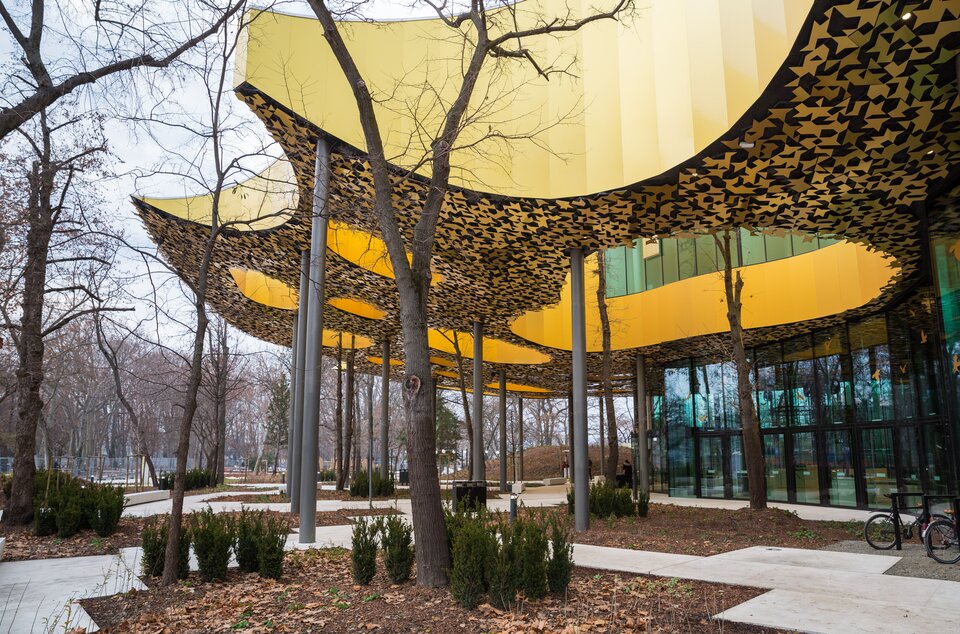
Arguably the most anticipated new initiative in Budapest since the millennium arts centre two decades ago, the House of Music Hungary was unveiled just before Christmas 2021 in City Park. Designed by Sou Fujimoto (the famous Japanese architect). it is recognisable by its signature roof, dotted with holes through which light and sound can travel, and trees can poke through. A huge glass wall surrounds everything – standing in the 300-seat concert hall makes you feel being in a giant aquarium. It is rare for the wall of a concert hall to be made of glass, and the acoustics are simply amazing. The 12-metre-high, continuous glass wall consists of 94 pieces, each of which has been manufactured individually. Wandering through the three levels of the Hungarian House of Music, its manifold functions feel more striking than the architecture around it. This is a concert venue, educational centre and museum in one, divided according to floor. Performances take place at park level and the area for concerts has been extended outdoors, so in summer it's a popular place for alfresco music and cocktails.
Funicular
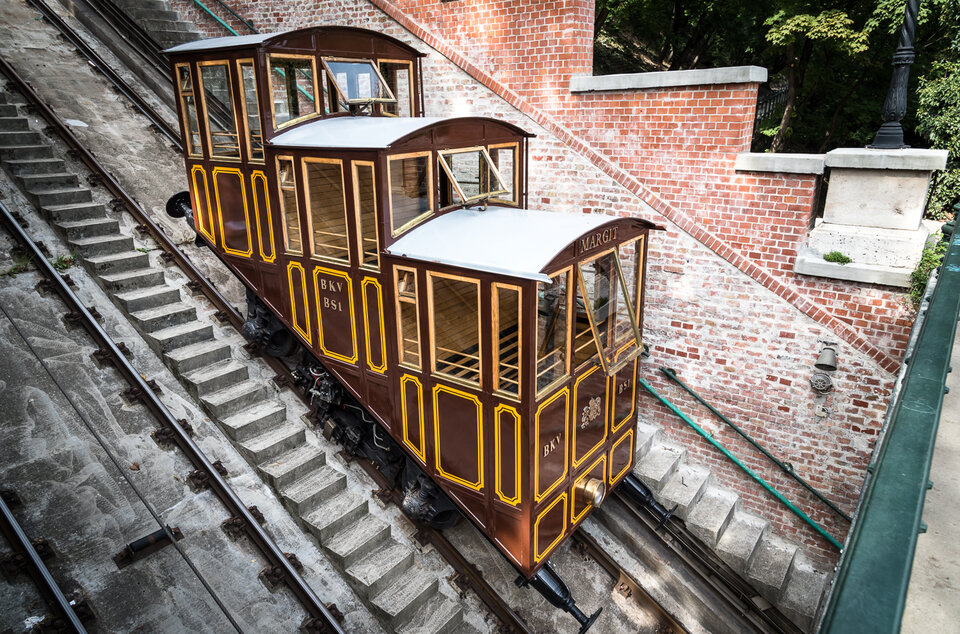
Connecting the Danube bank with Castle Hill, the Funicular (Sikló) was first put into service in 1870. Back then, it carried clerks and public officials up to do a day’s work in Buda Castle. Destroyed during the war, it wasn’t restored until 1986, when it was given a vintage appearance and soon admitted to the list of UNESCO World Heritage sites as a distinctive element of the Danube embankment. It runs on a steep, 95-metre slope, elevating 50 metres along its way. Although the Funicular is operated by the Budapest Transport Corporation, ordinary public-transport tickets and passes are not valid and you’ll have to join the inevitable queue to buy a single (1,200 HUF) or return (1,800 HUF). The two cars, Margit and Gellért, are connected as counterweights: while one runs uphill, the other comes down.
Opera House
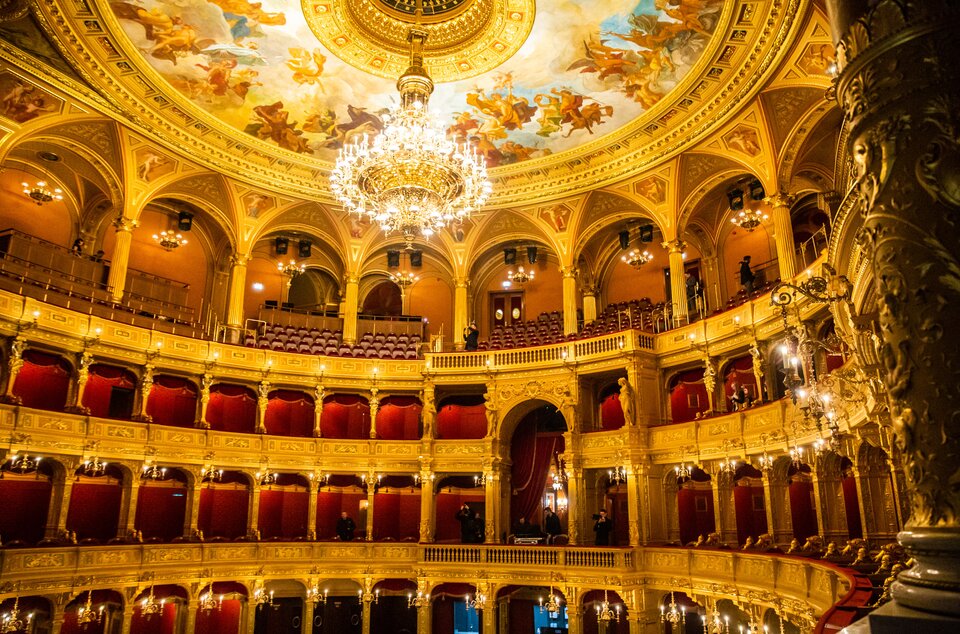
The Opera House - Hungarian State Opera – opened in 1884 – (Magyar ÁllamiOperaház) is the masterpiece of Miklós Ybl, one of the greatest Hungarian architects of all time. The building is a splendid example of neo-Renaissance style, while its rich ornaments also show a few baroque elements. The auditorium can seat 1300 persons, and although the Hungarian State Opera is not the largest opera house, it has the 3rd best acoustics in Europe after the Scala in Milan and the Opera Garnier in Paris. There are two guided in the building every day, at 3pm and 4pm
Museum of Illusions
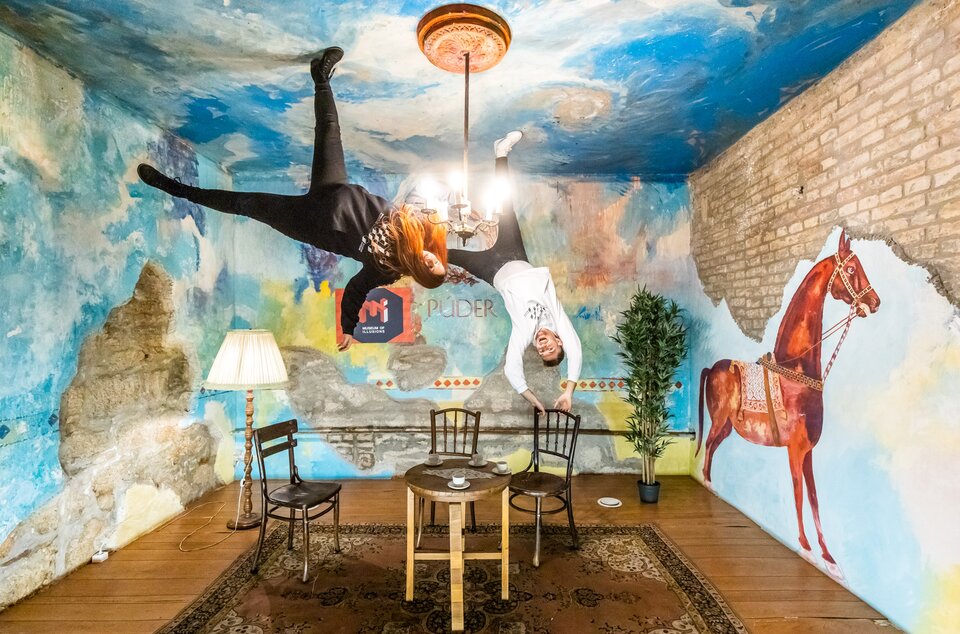
Having opened in many big cities around the world, the Museum of Illusions has finally opened in Budapest. The idea, showcasing many tricks and optical illusions, belongs to two Croatian architects, and the Hungarian exhibition space can be found near centrally located Deák Ferenc tér. The concept is based on tricking the eye and the brain, and on the power of astonishment. You can turn upside down, become a dwarf, spin around while not moving at all, the experience is simply fascinating.
Margaret Island
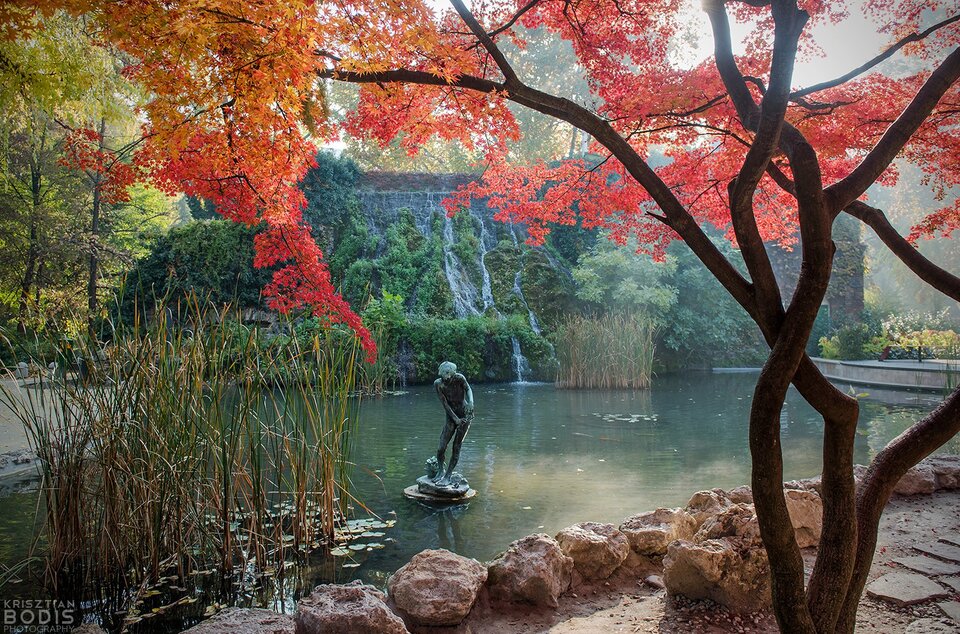
Margaret Island (Margitsziget) is the green heart of Budapest. It lies in the middle of the Danube between Margaret Bridge and Árpád Bridge. Apart from a couple of hotels and sports facilities, there are no buildings on the island – it’s a huge recreational space with promenades and benches, cycle paths and a jogging track, great for a date or a picnic. Here is where you’ll find the Hajós Alfréd National Sports Pool, the popular Palatinus lido, a petting zoo, a musical fountain and a Japanese Garden. Few cars are allowed – the island is served by the No.26 bus from Nyugati station, and it has its own stop on the frequent 4/6 tram route, halfway along Margaret Bridge. All kinds of bikes, tandems and pedalos can be hired. Towards the north end of the island, in the shadow of the Water Tower, an open-air concert venue operates in summer for mainstream entertainment. Close by, the ruins of a medieval Dominican convent are historically linked to former resident Margaret, daughter of King Béla IV, after whom the island is named.
Great Synagogue
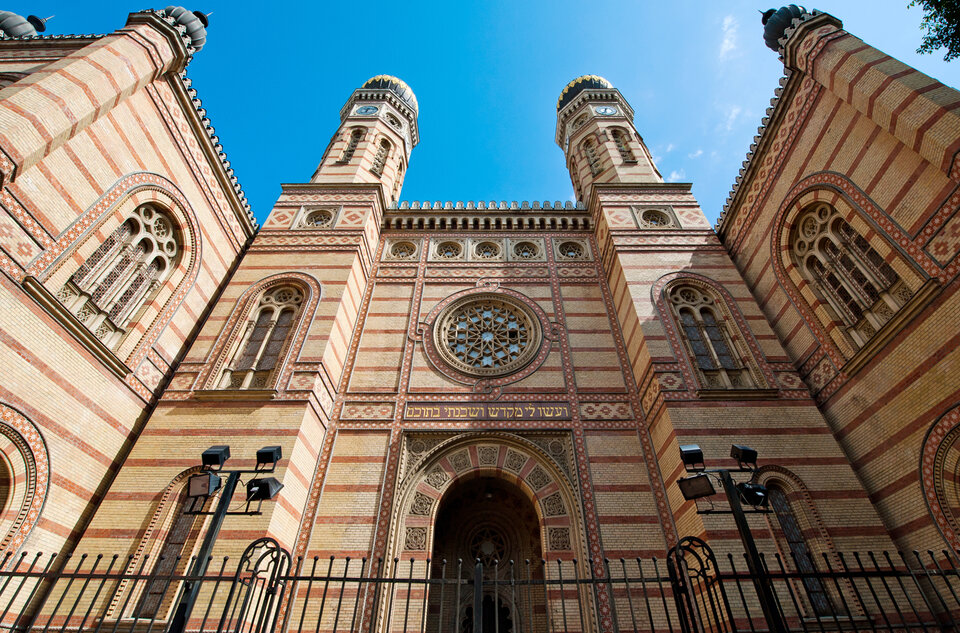
Also known as the Dohány Street Synagogue, this moving historic landmark is one of the largest of its kind in the world. It was built in the late 1850s by Viennese architect Ludwig Förster, who chose a Moorish Revival style partly inspired by the Alhambra in Granada. It was consecrated in 1859, alongside the house where Theodor Herzl, the father of modern Zionism, was born a year later. Severely damaged during World War II, when it stood at the gateway to the Jewish Ghetto, the Great Synagogue remained neglected for decades until major renovation took place through the 1990s. Partly funded by prominent Jewish Americans Estée Lauder and Tony Curtis, the rebuild saw the overhaul the on-site Jewish Museum, Heroes’ Temple and Jewish Cemetery. Behind, the Holocaust Memorial Park features Imre Varga’s weeping willow statue bearing the names and tattoo numbers of victims on its leaves, and honours the brave international diplomats, Swede Raoul Wallenberg included, who risked their lives to save Jewish ones. As well as a major tourist attraction in Budapest’s recently revived Jewish Quarter, the Great Synagogue is still an active place of worship, seating 3,000, half in the women’s gallery. Guided visits can be organised at the office of Jewish Tour Hungary by the synagogue at Síputca 12, where there’s also a small gallery and community space.
Buda Castle
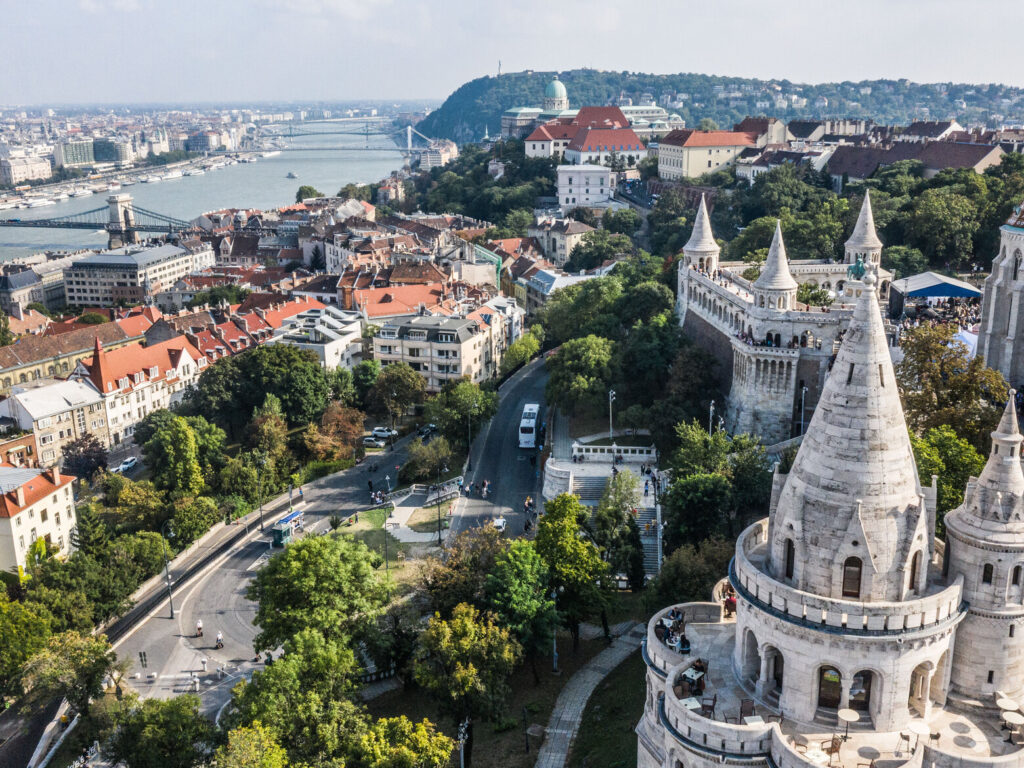
A World Heritage Site, Buda Castle (or Royal Palace) on Szent György tér is one of the most emblematic architectural masterpieces of the city, and the building easiest to recognise from the Pest side of the Danube. Little remains of this former royal residence, first built the mid-1200s and recreated as an ornate Renaissance palace for King Matthias 200 years later. Surviving examples of medieval stonework can be found in the Budapest History Museum, one of three major institutions currently housed in this sprawling complex. Neglected under the Turks, destroyed during the siege to remove them, formed into its familiar U-shape when given a Baroque rebuild in the 1700s, the palace lay in ruins after World War II. The Communist rebuild stripped out its more fanciful features, and imposed Modernist touches, such as the dome, added in the 1960s. Today the palace functions as a cultural destination: the Hungarian National Gallery fills Buildings A-D, the National Széchényi Library is in Building F, while the Budapest History Museum is located in the southern wing, Building E. The annual Buda Castle Wine Festival is also held every September, in addition to other cultural and gastronomic events throughout the year. At the foot of the complex overlooking the river, the scenic Várkert Bazar also hosts regular exhibitions and cultural happenings.
Parliament
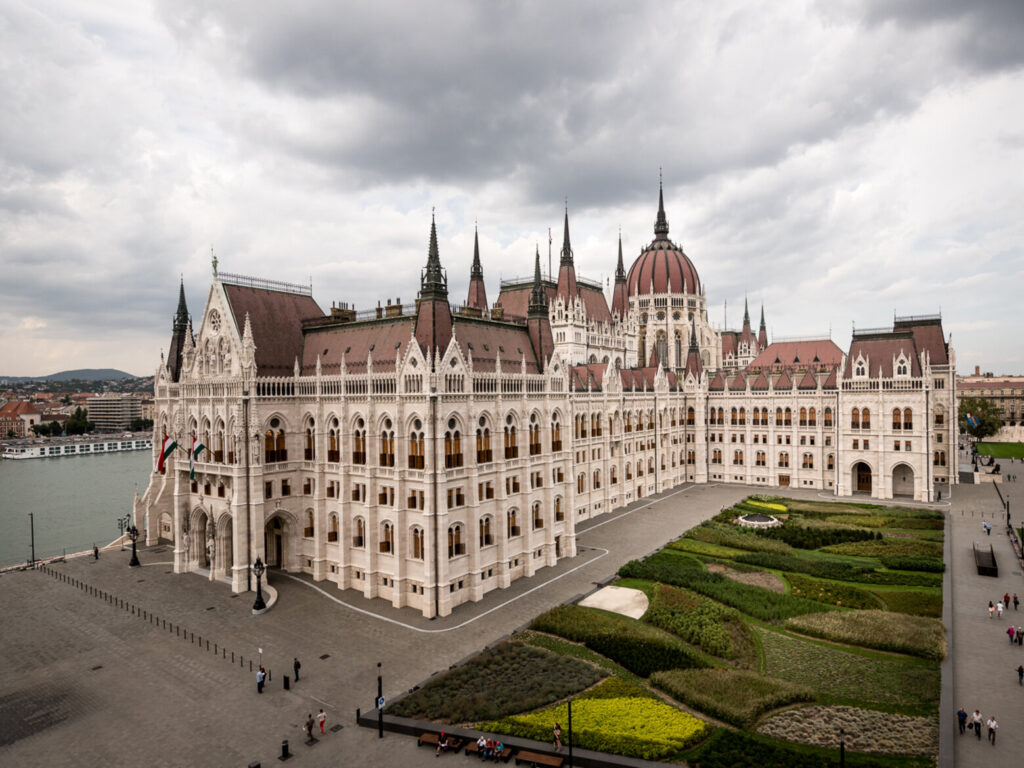
The Gothic outline of Parliament is one of Budapest’s most familiar landmarks, dominating an elegant curve of the Danube close to central Pest. This architectural masterpiece was designed by Imre Steindl to stand 96 metres tall, in line with the Hungarian millennial celebrations of 1896, when it was inaugurated. At the time, it presided over a nation that then extended as far as the Adriatic. Still part of the largest building in Hungary, many of its 691 rooms today remain unused though the ornamental grandeur of its 29 staircases, frescoes, half-a-million precious stones and 40 kilograms of gold continues to impress sightseers.
Parliament is also home to the Holy Crown, the royal sceptre and the orb of the first kings of Hungary.
Currently, six English-language tours are given a day – buy advance admission – and a limited number of tickets are available on the day from the adjacent Visitor Centre.
Fisherman’s Bastion
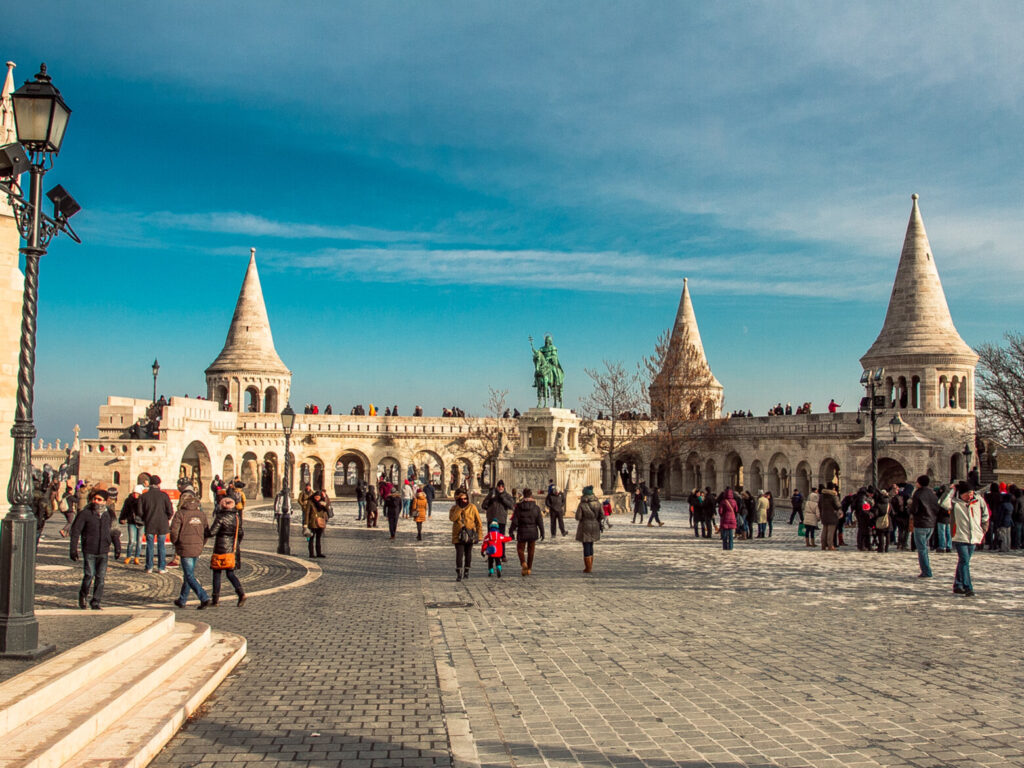
A faux historic landmark in the Castle District, the ornate confection of the Fisherman’s Bastion (Halászbástya) was conceived to offset nearby Matthias Church rebuilt by the same architect, Frigyes Schulek. Using the remaining sections of the fortress that ran along this panoramic edge of Castle Hill, Schulek created an elegant walkway topped with seven cone-topped towers, symbolising the Magyar chieftains who settled in this part of the Carpathian Basin in the late 800s. Some 140 metres long, the bastion, named after the fishermen’s guild who defended this section of the wall in the Middle Ages, provides outstanding views of the Danube and Pest cityscape.
Spice Of Europe
- website with multiple tips -

Hungarian Cooking Class
Dish: of your choice
Gulyas soup (delicious beef soup and veggies)
Chicken paprikash ( chicken in a paprika sauce)
Stew and dumplings (meat of choice cooked in a spicy paprika sauce)
Cholent /shunt (Jewish- Hungarian bean stew)
Flodni (Jewish-Hungarian cake with layers of walnuts, poppy, apple and jam)
- a seasonal dessert
- a local Hungarian wine to match your lunch
What we will do?
All you can learn about the best of the Hungarian cuisine! Let's prepare together the fav dish, Hungarian Chicken Paprikash, we eat for Sunday lunch and grave for when far away. First, we will buy the ingredients at the market or shop and go my apartment. I will show you the tricks and bits, how to work with paprika, the basic ingredient Hungarian dishes! These techniques I learnt from my grandparent and in the cooking studio I worked for, are worth noting. Then you can enjoy the soft chicken and tender creamy dumplings in your home, too! Plus, you can a delicious dessert and wash it down with a local wine. All full-meal with Hungarian music in my kitchen and a nice conversation.
What else?
What you will experience?
You will be able to see the centre of our lives, our kitchen, where most of our life is focused around. Plus, you can see how we, Hungarian live, a real journey itself. But still, in the safety of you home. Connect to my cooking class with audio/video, so you enjoy every minute of it!
What we will provide?
All the ingredients, the venue, the kitchen tools and the local experience.
My Background
I have been cooking with guests from all around the world for more than 8 years and who had wonderful experiences with me making the delicious Hungarian dishes like chicken paprika with nokedli (dumplings). Now, I miss my guest, but make it possible still, to enjoy this phenomenal and simple dish at home. Children are also welcome to join!
Price per person
HUH 24000.- /EUR 60 EUR from age of 16 and above
Children under 16 is free
Location: Budapest 1136, Raoul Wallenberg street 2
Time: Thursdays at 10:30, optional : Sundays.
Streetfood Heaven Budapest
All the essential street food on one tour to taste local Hungarian specialities.
What we will do?
We'll visit one of the local farmers’market on Pest side which is renowned for its organic and home-made stuff and a local experience how we do our daily shopping. Walking in a local neighbourhood for a bite at the butcher’s for a paprika sausage and salami. Stroll around the local farmers' market and learn about the fresh ingredients. It is a great opportunity to buy some gifts or home-made paprika at the market.
We'll and end up in a local tavern for a delicious gulyás and some drinks to wash down the food.
What we will taste?
Typical breakfast at a bakery: ‘Chocolate snail’ and ‘Vanila baggies’
Best of the market produce from local vendors: kolbasz and smoked cheese…
Have you ever eaten pickled baby watermelon? Don’t miss the chance!
Taste popular street-food like 'lángosh' the deep fried dough
Hungarian strudel 'rétes' in different flavours
Best Hungarian Gulyás soup at a local tavern
Other things to note
Options for allergies are possible. Gluten-free, Vegetarian
Dress as weather suits and as you will feel comfortable for 2,5-3 hours.
We will optionally use public transportation.
Tour starts at Deak Square and ends at a different destination near Margaret Bridge.
For private groups from 6 people, you can choose a pick-up point.
My background
I am a Budapest-loving local and an enthusiastic chef who loves shopping for fresh and home-made ingredients at local markets. There are much more to Hungarian gastronomy than just goulash and paprika. I set up off-the beaten track walking tours, Curious Miles, to show the real Hungary and its hidden treasures.
Location: Deak Ferenc tér, Budapest, 1055. In front of Starbucks Café
What is included? All the food we taste. What is extra? Single tickets for transportation.
Price: Per person HUF /EUR
Adults (ages 13 and older)HUF 21 800 .- / EUR 55.-
Children (2–12 years old)HUF 8000.- / EUR: 20.-
Infants (under 2 years old)HUF - 0
DISCOUNTS: Group of 6 or more 15 % off
10 exceptional restaurants serving Hungarian classics
Goulash soup, chicken paprikash, roast beef with crispy onion rings (hagymás rostélyos), cordon bleu, or rooster testicle stew – which is the one you would try while in Budapest? In our round-up, we handpicked 10 top-notch restaurants and bistros offering Hungarian favourites.
Szaletly

1146 Budapest, Stefánia út 93.
Dining at Szaletly is a pleasure for many reasons. For one, it is close to the City Park, so it comes with a suburban feel and pretty walking routes for before (or after) your meal. Also, it gives you a taste of the former glory days of the neighbourhood (see old photos here). But most importantly, the restaurant boasts brilliant gastronomy. The dishes are mostly traditional but sometimes get jazzed up with a fusion. And although Hungarian cuisine is famously heavy on meat and fat, their vegetarian selection is imaginative, too. Yet, we would never miss an impeccable chicken paprikash, potato casserole, pork tenderloin, or Stroganov steak. If you were to venture a bit, try the chef’s offer, which is the chef’s excursion into a more unorthodox world. Either way, leave space for dessert: the Floating Island and the Somlói (classic Hungarian sponge cake) are excellent! We love to experience this bourgeois atmosphere in Zugló.
Remma's Bistro
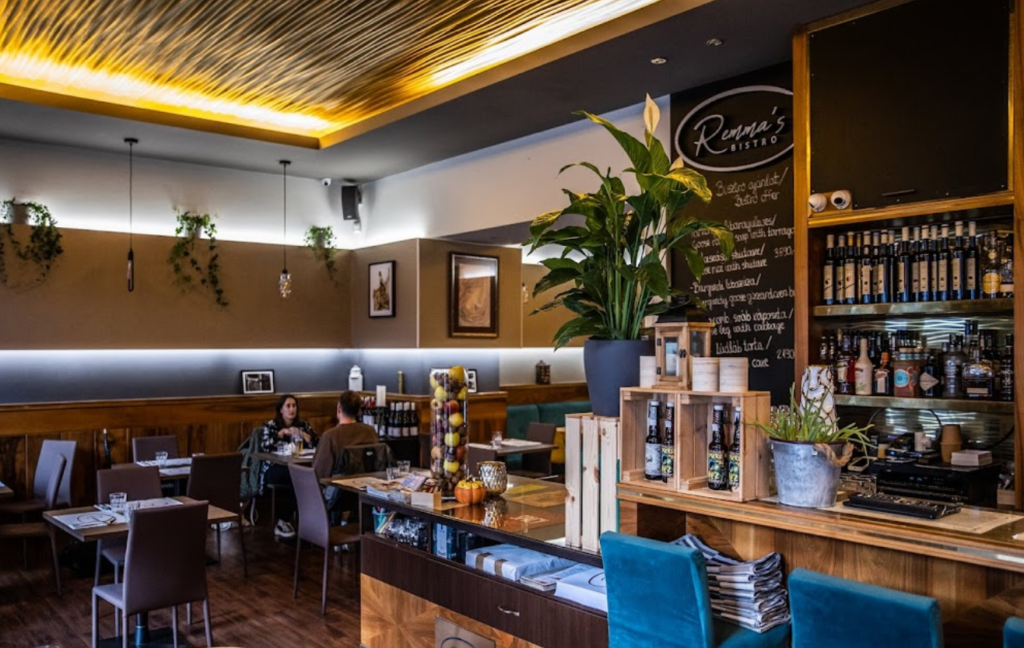
1075 Budapest, Rumbach Sebestyén utca 7.
Our latest discovery is the slightly secluded but all the more excellent Remma’s in the 7th district. Behind the modesty is pinpoint professionalism and food prepared with love and integrity. It’s a very genuine place, simple and cosy, where you won’t feel out of place in your jeans – on the contrary! With tradition in mind, they build on the foundations of French cuisine to create ingenious dishes, whether it’s a simple lunch menu or an à la carte offering. Both are given equal importance, with no favouritism, which is very appealing. From their limited but all-the-more exciting menu, we highly recommend the lamb ragout soup, the potato pottage with breaded black pudding, and the Mangalica pork leg stew with noodles and roasted cabbage. If you’re in the mood for modern classics, book a table here!
21 Magyar Vendéglő
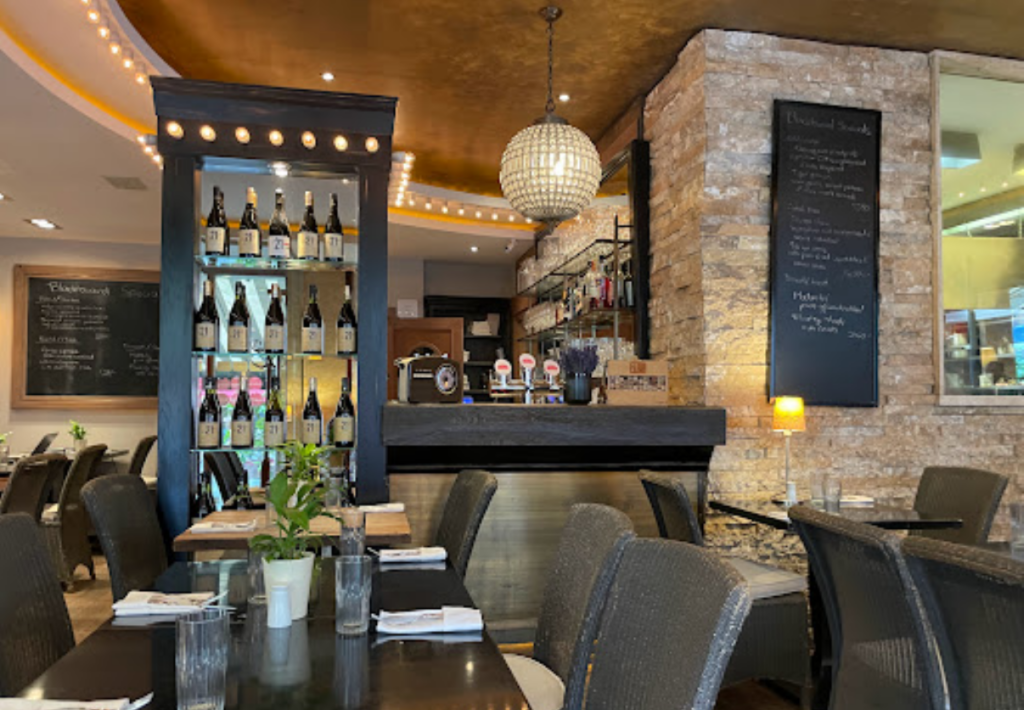
1014 Budapest, Fortuna utca 21.
21 Magyar Vendéglő is one of our favourite gastro spots in the Castle District for Hungarian classics. The area is teeming with tourists, yet this part of the Castle seems less busy. The restaurant has been at the forefront for 13 years now, welcoming guests intrigued by the Hungarian-styled kitchen and spices (an abundance of garlic, onion, and paprika). Many people come for their goulash, farm chicken soup, Hortobágyi chicken pancake, and chicken paprikash, as these are regular items on the menu. But they also prepare pike perch fillet Rácz style and 21st-century spinach pottage, which you can order with fried lamb ribs and breaded eggs.
Stand25 Bisztró
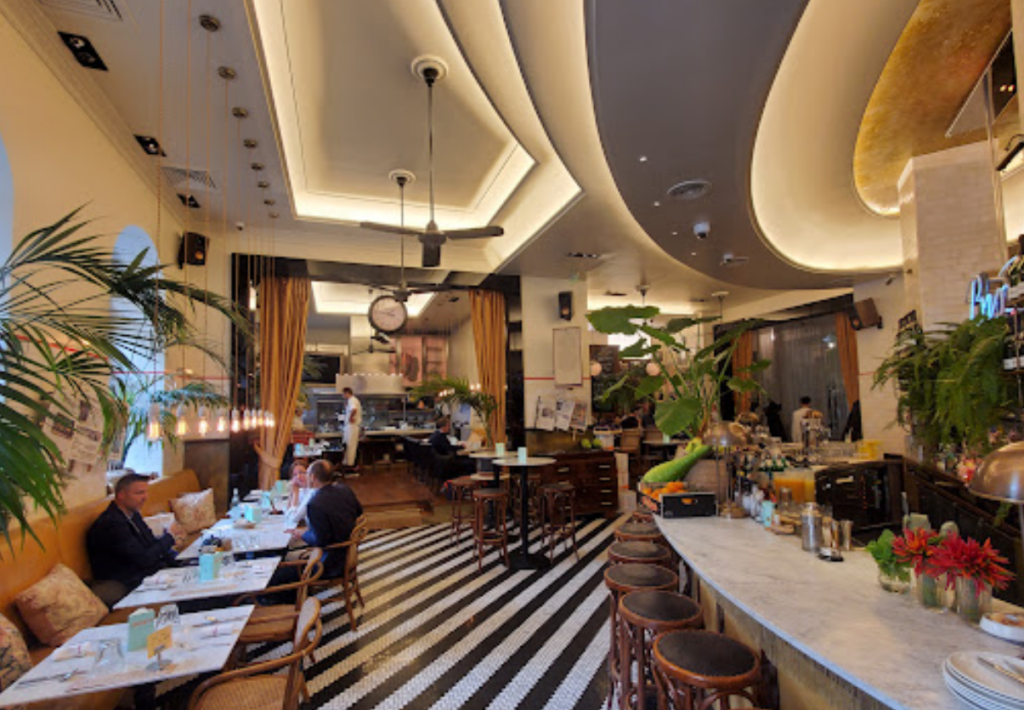
1013 Budapest, Attila út 10.
Stand 25 is our go-to place when a friend or relative visits us from abroad. It is partly because the bistro is nestled in a lovely neighbourhood, at the foot of the Buda Castle, near the Tunnel. But more importantly, it is a much-appreciated bastion of Hungarian cuisine, presented by the expert hands of Szabina Szulló and Tamás Széll. Goulash soup is iconic, as is the roasted pork tenderloin “Brassói” style or the Mangalica Cordon Bleu, the best stuffed and fried meat in town. You can choose the three-course Stand25 menu, but you can also get lost in the à la carte favourites. Here you’ll be treated to a masterly feast.
Séf Asztala
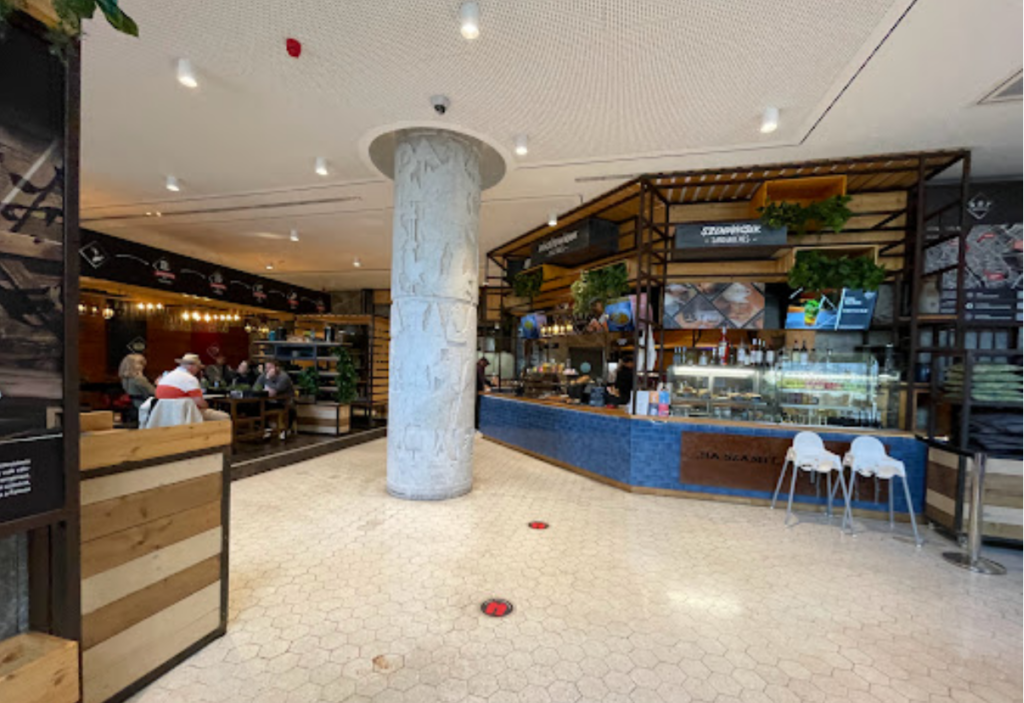
1055 Budapest, Kossuth tér 6.
Here is a restaurant that doesn’t seek a Michelin star and world fame but aims to enhance your everyday life with great flavours, intimate surroundings, and expertise. The Hungarian dishes at Séf Asztala are of consistently high quality, from the goulash to the potato noodle desserts. Their Wiener Schnitzel is excellent, but they can also prepare a simple breaded cheese in a way that leaves a good taste in your mouth for a long time. The restaurant works perfectly for a quick, hurried lunch, but we prefer the chatty version on the terrace, which comes with Parliament views. Afterwards, there’s plenty of time for a walk along the Danube!
Menza Étterem és Kávézó
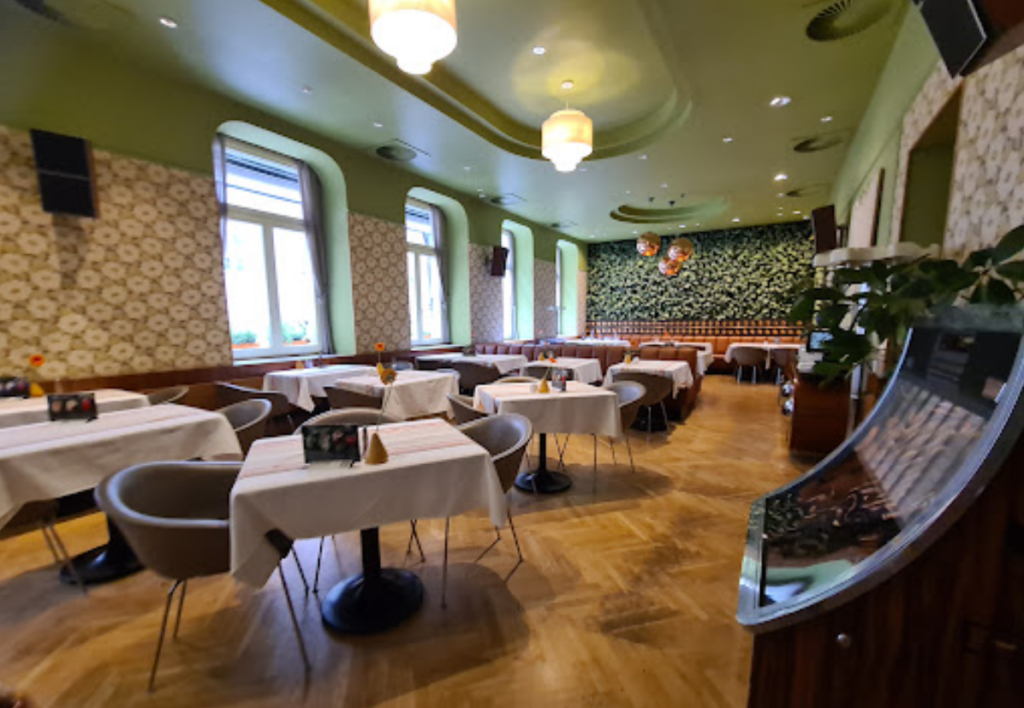
1061 Budapest, Liszt Ferenc tér 2.
With a 20-year history, Menza’s continuous full houses prove its perpetuity. Thank goodness! It is one of the most reliable restaurants in town, with unwavering quality and many classics that have been on the menu since its existence. They have a great lunch menu and a weekly offer, too. Our favourites on the regular menu include garlic cream soup with lángos topped with sour cream and cheese, homemade egg spaetzle with lettuce, fresh ratatouille with eggs and sausages, duck liver pâté with onion chutney and toasted homemade wicker cake, Menza Wiener Schnitzel, roast beef with crispy onion rings, gravy, steak potatoes, and homemade chopped pickles. It’s a long-lasting love affair, close to Oktogon.
Gettó Gulyás
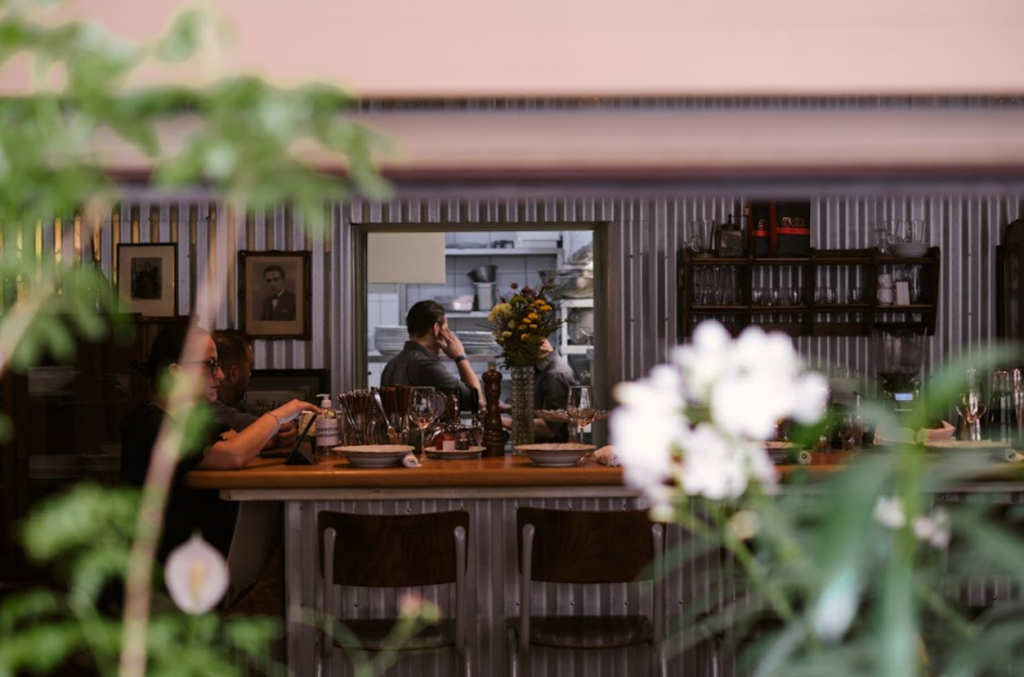
1077 Budapest, Wesselényi utca 18
Gettó Gulyás is a gem in the Jewish Quarter. We love their retro photos and how they can spice up a plain Tuesday lunch with a photo of a last-century dough stretching. Their other trademark is that they’re called a “stewery”, and yes, that sums them up. The à la carte selection includes beef stew with red wine, gizzard stew, knuckle stew, and catfish paprikash. But let’s get wild: they also cook rooster testicles and cockscomb stew, so if you feel experimental or are up for digging deep into Hungarian classics from a different era, Gettó Gulyás is the answer. You can also order Hortobágyi pancakes, beef Tartare and goulash ‘Alföldi’ style, and the dipped bread starter is to die for.
Vakvarjú Étterem – Újlipót
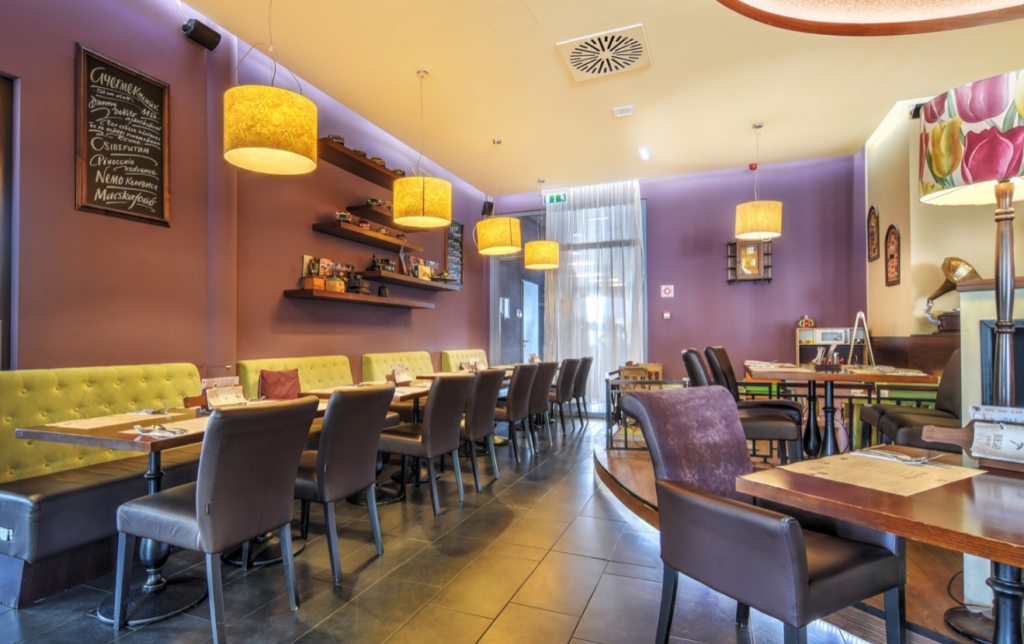
1133 Budapest, Bessenyei utca 4-6
In vibrant Újlipótváros (13th district), VakVarjú is a cosy restaurant with a diverse menu but a focus on Hungarian cuisine. A big perk is that it is family-friendly, coming with a menu for kids, an indoor children’s corner, and an outdoor playground. There’s a covered and open terrace, too, and in the evenings, you can enjoy a live piano solo. The menu offers both traditional flavours and surprising combinations, including classic chicken soup with noodles, goulashsoup served in a pot, and pan-fried duck liver mousse, with fresh lecsó. You can even try squealer knuckle, pulled and pressedwith trottersstew. They offer about 50 different wines by the glass, so there will be plenty to pair with the classic menu. (The restaurant is inside the RaM-ArT Theatre building.)
Pörc & Prézli Restaurant
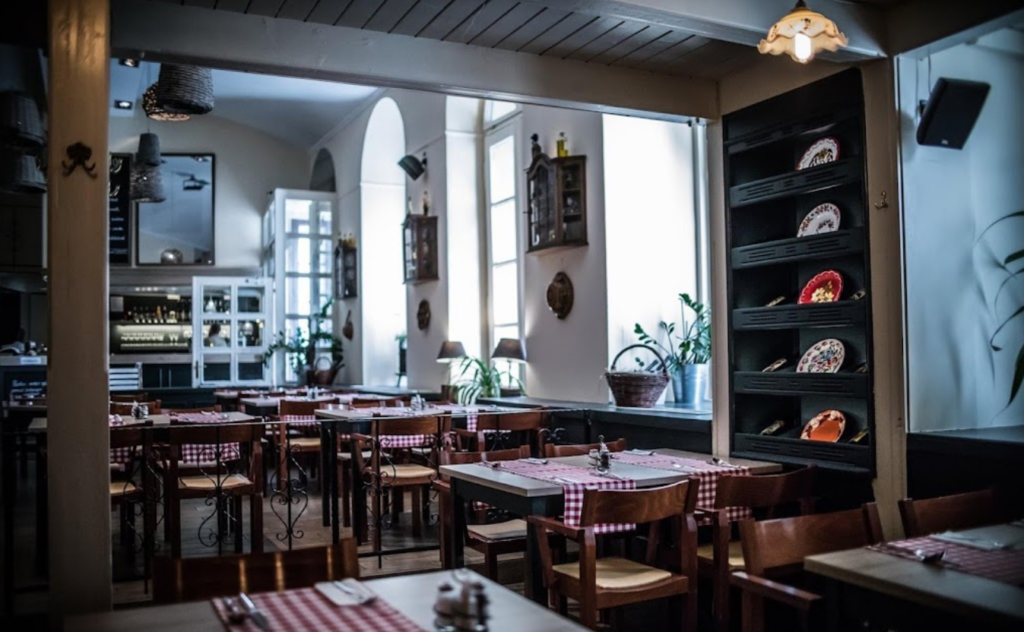
1065 Budapest, Lázár utca 1.
Pörc & Prézli is an outstanding Hungarian restaurant close to the Basilica. It offers remarkable cuisine, while checkered tablecloths add to the ambience (but not in a tacky way). They showcase classics that will make a foreigner curious and a local enthusiastic. The perch fillet comes with remoulade sauce, the pork tenderloin with roasted potato dumplings and oyster mushroom, and the Somlói sponge cake cannot be complete without golden raisins. The saviour of family lunches, this is the place where grandma and the sulky teenager will find their match.
Macesz Bistro
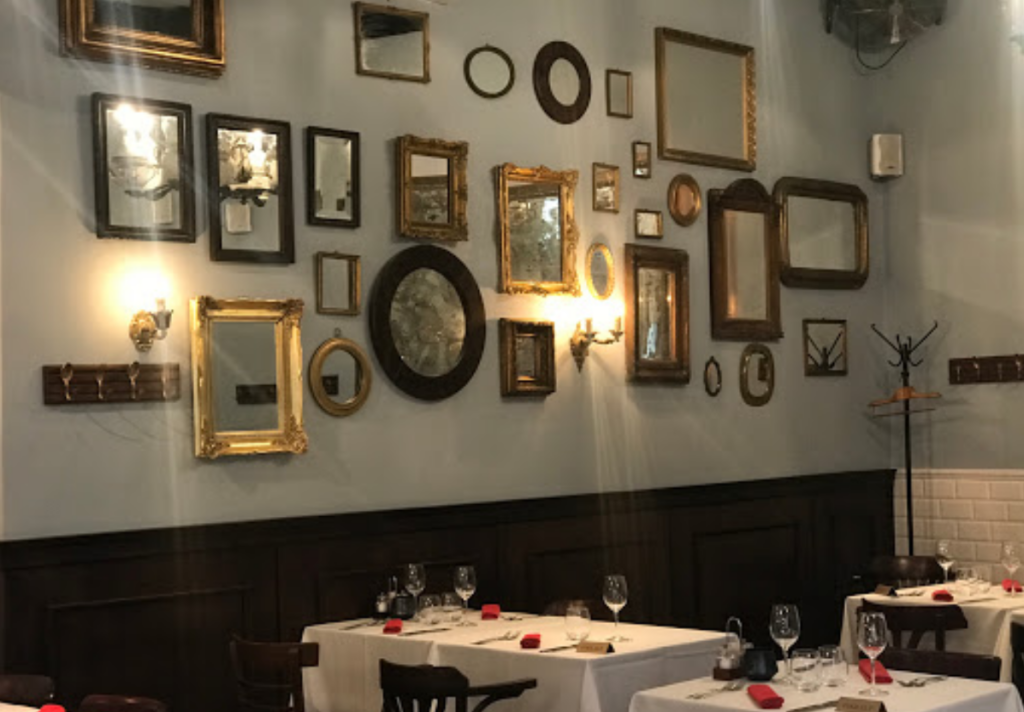
1072 Budapest, Dob utca 26.
Hungarian-Jewish cuisine is a perennial favourite, whether it offers meat consommé with matzo ball, soup, Ludaskása (duck wing & liver, goose gizzard, pearl barley risotto), or even Flódni (a multi-layered pastry, with jam, walnut, poppy seed and apple). Macesz Bistro has been open since 2012, in the heart of the Jewish Quarter, with a pleasant, bourgeois interior, attentive service, and plenty of expertise. Innovation goes hand in hand with keeping the authentic character of the dishes. More recently, contemporary inspirations from Israeli cuisine have emerged, but we always go for the classics, which are in abundance. The cholent with duck leg is truly a must-try, but the menu also includes pork chop confit 'Pékné' style. The Somlói sponge cake is also excellent here, especially for those who don’t like raisins: you can opt for having this delicacy without them.
Original article: WeLoveBudapest
Cafes nearby
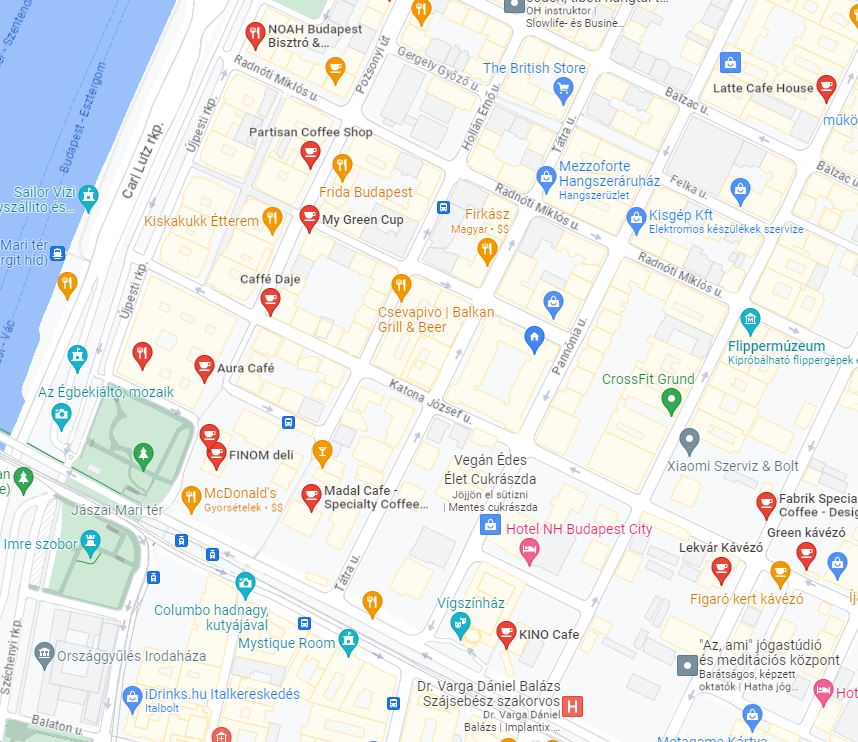
Recommended restaurants nearby
Mosselen
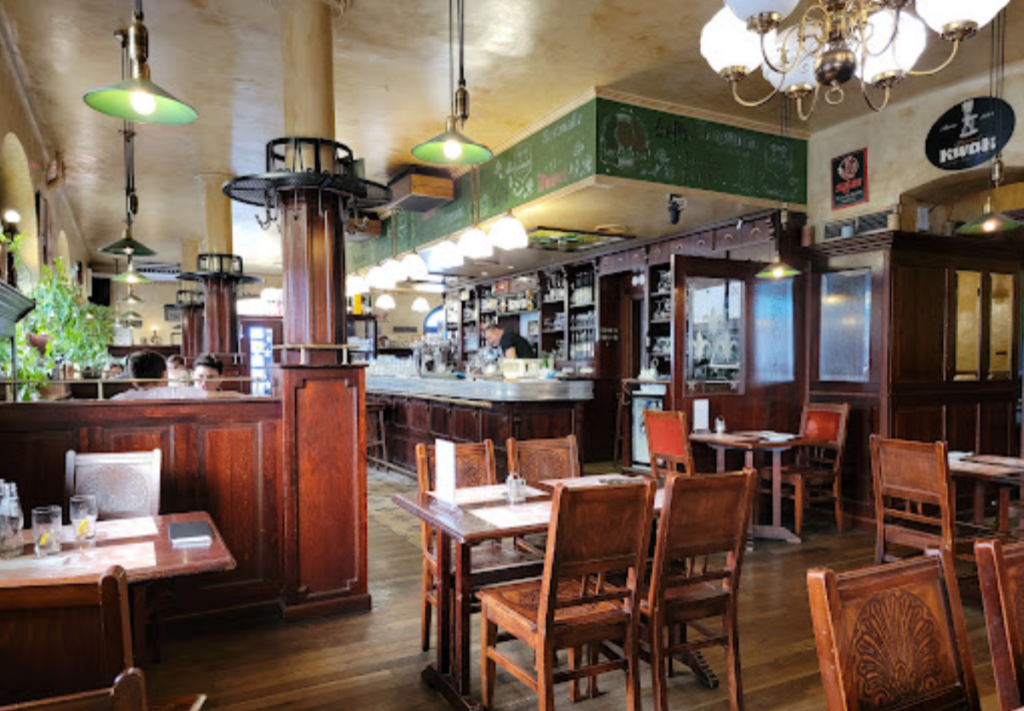
This authentic Belgian bistro right around the corner from the flat has over 50 different types of beer and offers delicious food. The restaurant also organises beer tasting game (‘beer casino’), in which participants can test their knowledge about beers in a playful way.
https://mosselen.hu/en/

Szilvakék Paradicsom

This family favourite, offers a great variety of food including traditional Hungarian specialties. The service is excellent and the meals are big, good value for money.

Firkasz
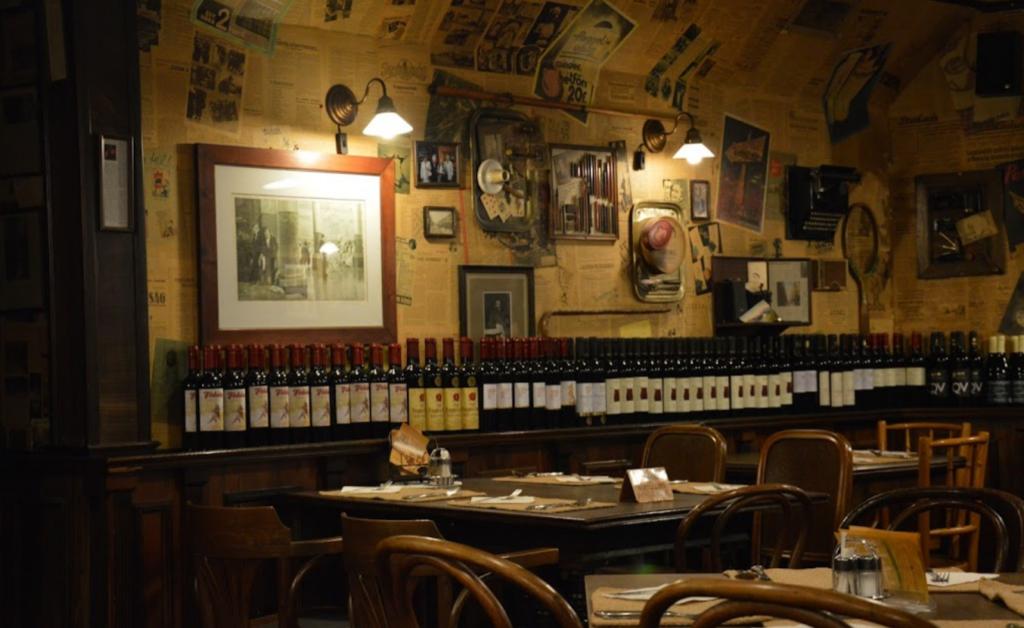
This restaurant is a real gem of Újlipótváros. It has amazing quality of food and outstanding service. The atmosphere of the restaurant is cosy and authentic, especially with the live piano music.

Pozsonyi Kisvendéglő
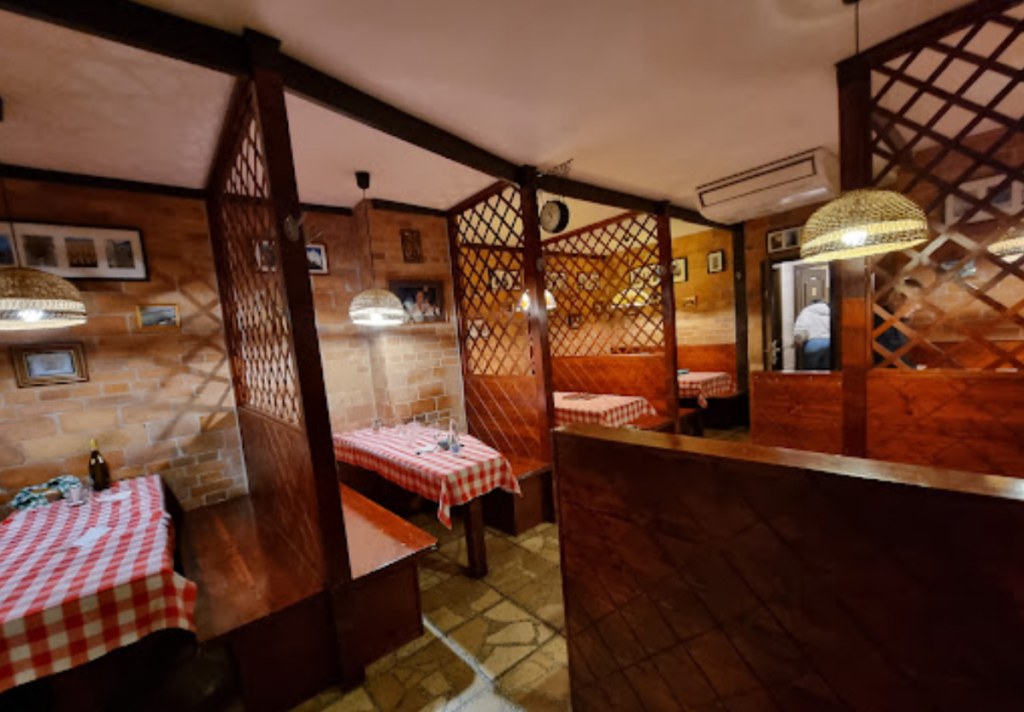
- friendly staff
- large portions
- traditional Hungarian style decoration
https://pozsonyi-kisvendeglo.eatbu.com/?lang=en

Kiskakukk
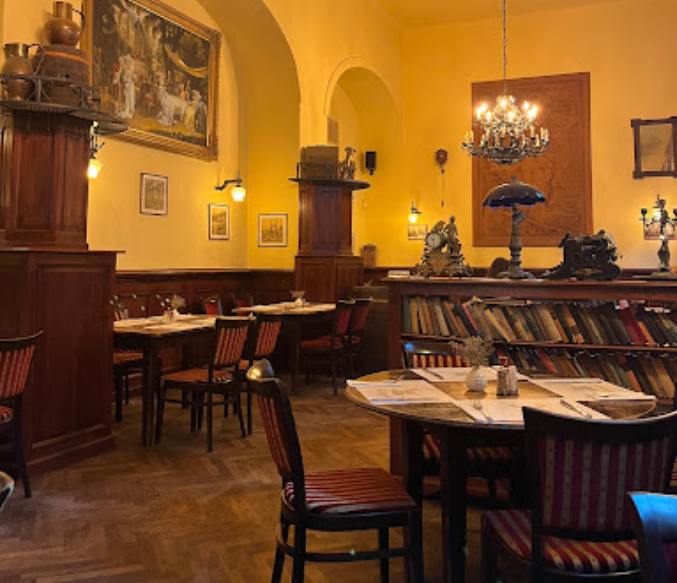

Bécsiszelet Kisvendéglő
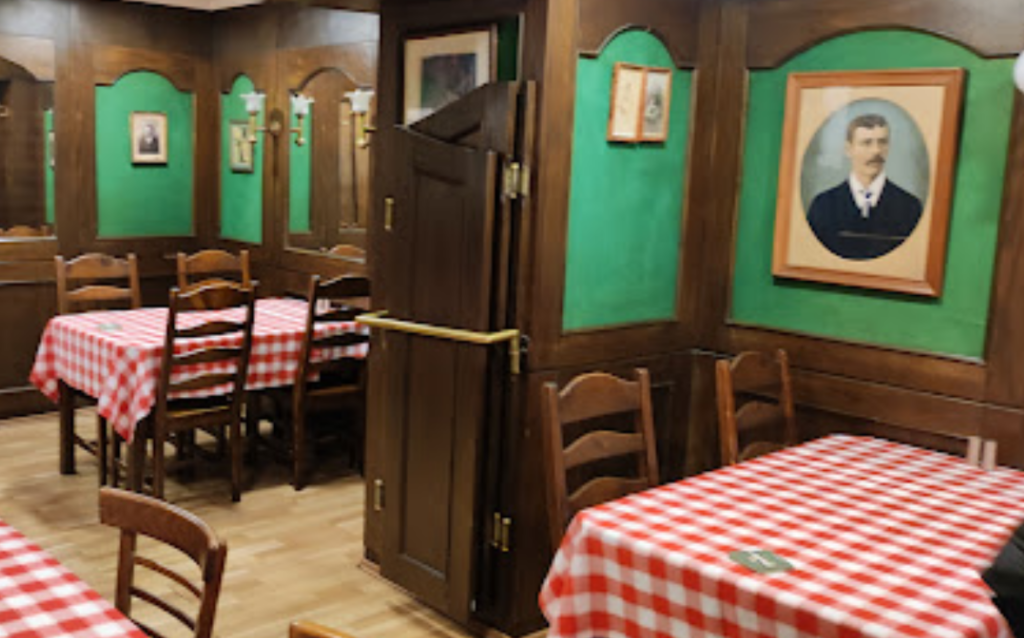

Pundzsab Tandoori
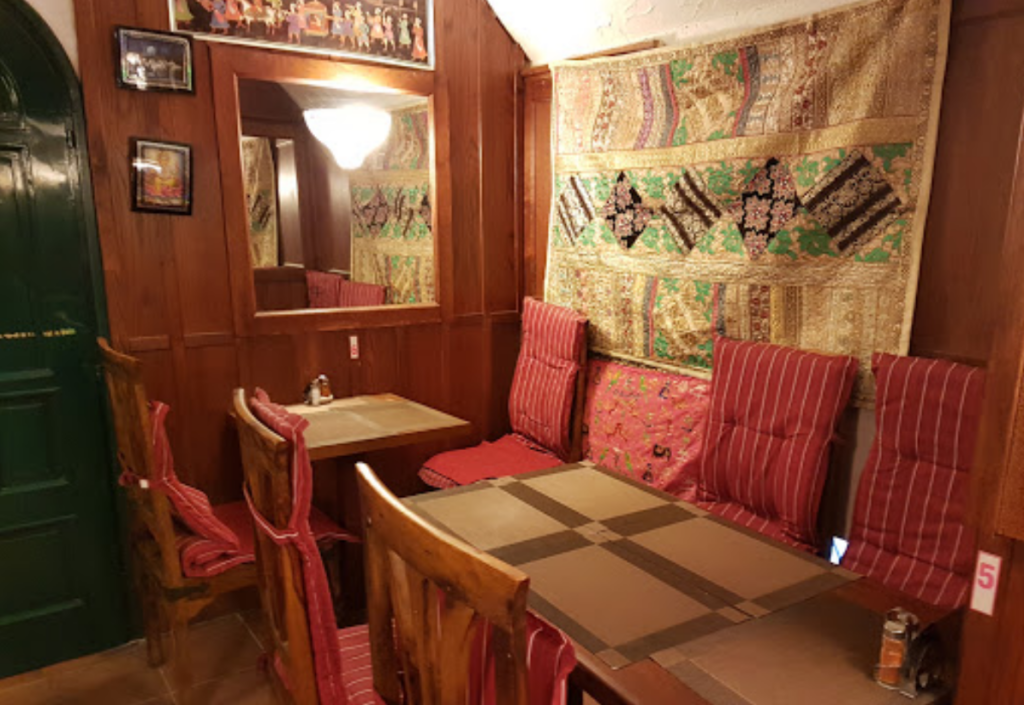
If you’re looking to spice things up, Pándzsáb Tandoori is a great choice, offering the exciting gastronomic creations of the Punjab province. The manager of this family restaurant, Rangeet Kumar, learned these authentic recipes from his mum and, before launching his own locale, he gained experience at several other restaurants. The guests of this smal leatery love the tandoori chicken, vindaloo and biryani, and vegetarians can also easily find something to their liking. Pándzsáb Tandoori’s atmosphere is authentic, strong, spicy scentsl ingering in the air. When the generous portions arrive, theyr are lydis appoint. The mangolassi is a must.
http://indiaietterem.hupont.hu/

Oriental Soup House
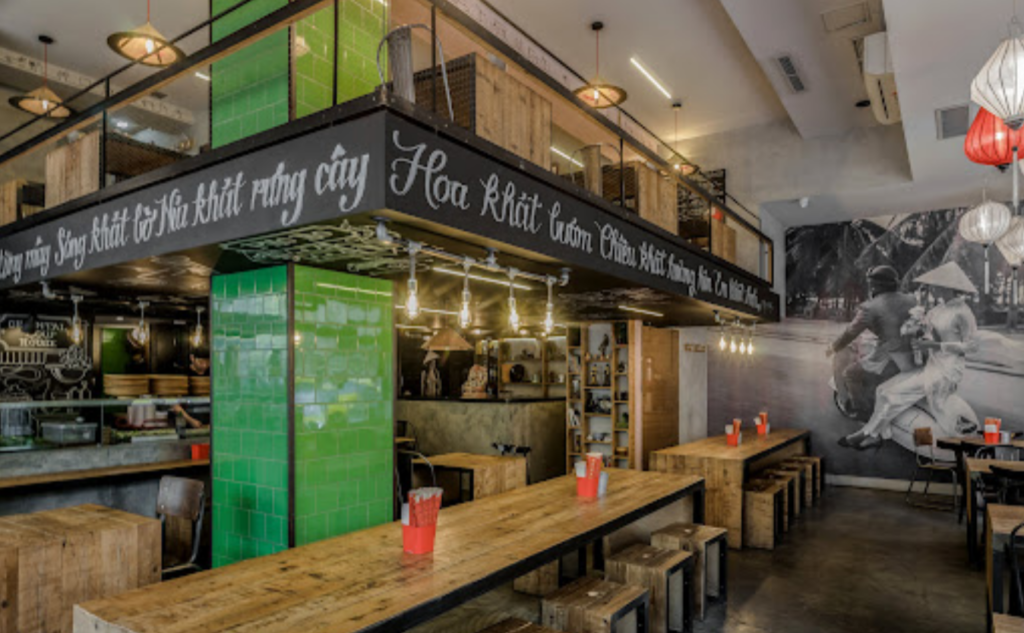
The Oriental Soup House is one of the city’s most authentic Vietnamese eateries, conceived by a pair of Vietnamese-French siblings. They try to prepare all the dishes in the most traditional way possible, based on home-style recipes. OSHO offers an infinite number of options: in addition to the standard pho soups, there are various kinds of meat-based and vegetariandishes as well.
https://en.orientalsouphouse.com/

Szeraj - Turkish food
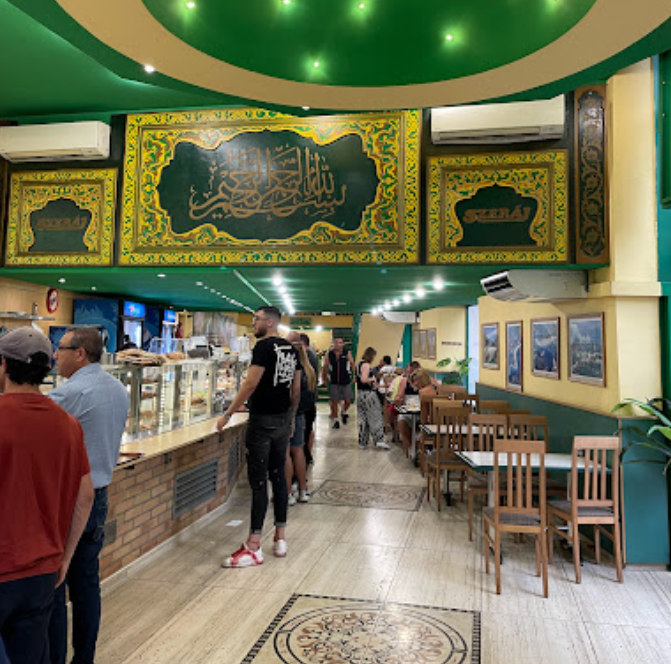

Budapest Jazz Club
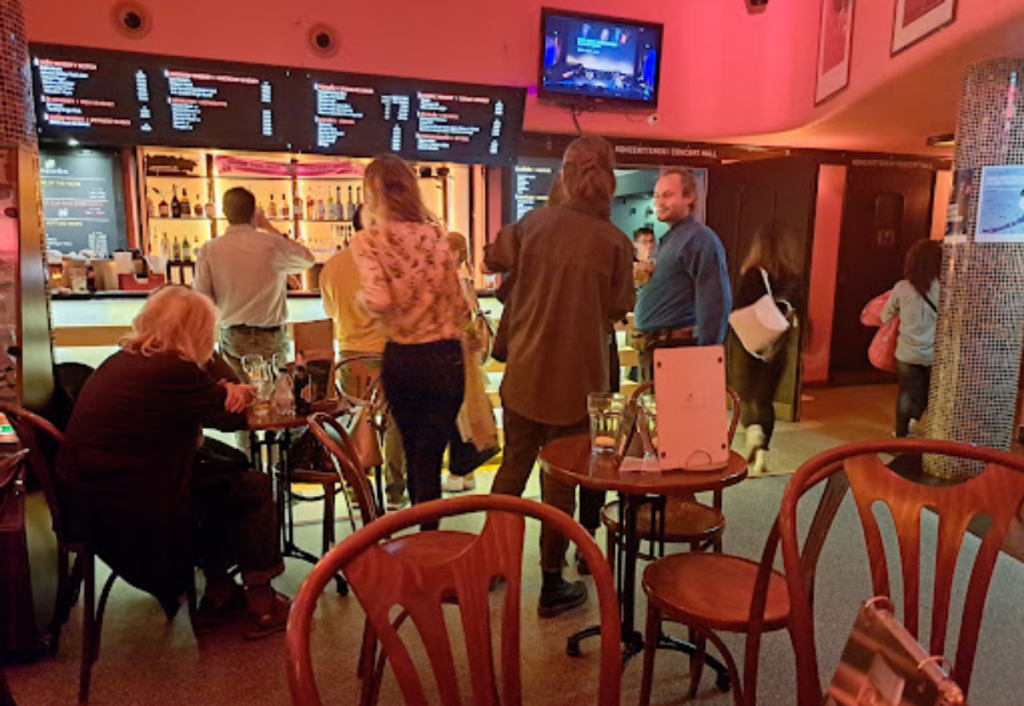
One of the main centres of Budapest’s local live-musicscene is the Budapest Jazz Club, set in a vintagecinema in District XIII. Oftenlistedamongthebestvenues in renownedmagazine, DownBeat, the BJC has seenRaviColtrane, Stacey Kent, Joshua Redman and Lonnie Smith graceitsstage. The club alsogives a platform toyoungtalent, hostsseveral of Hungary’s main jazz events and itsfriendly café and restaurant are a greatplaceto hang out before a concert.

